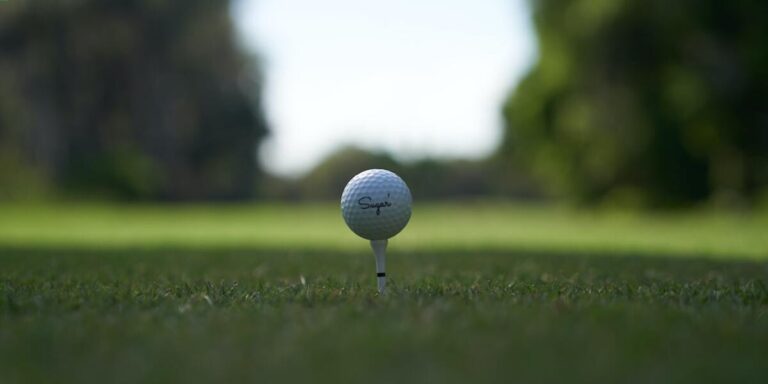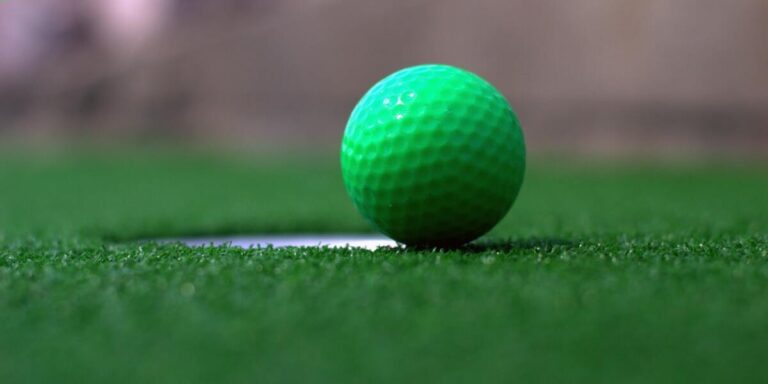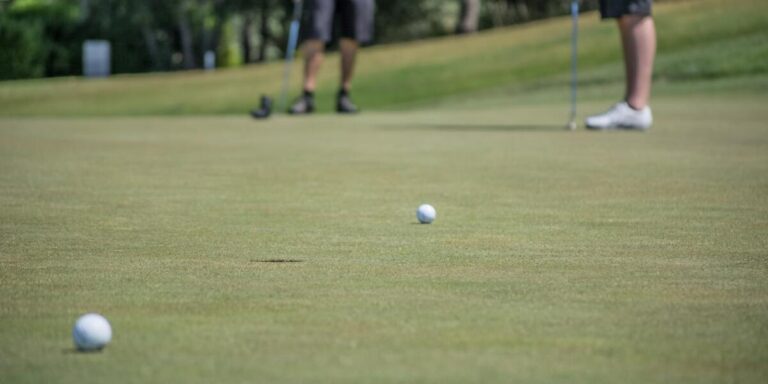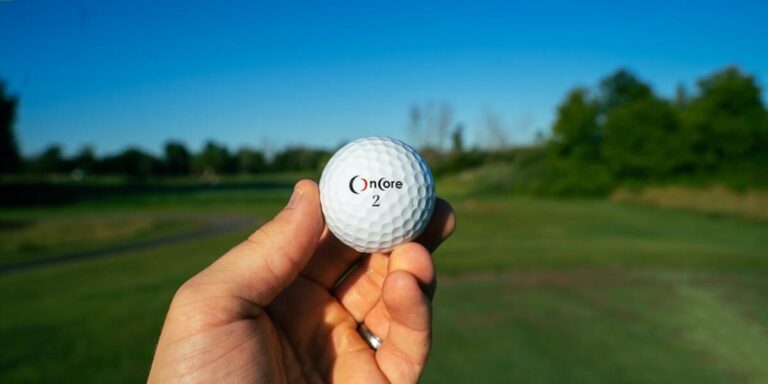What ball compression should I use?
If you’re an avid golfer, then you know that using the right ball compression can make a big difference in your game. But what exactly is ball compression and how do you know which one to use? Here’s a quick guide to help you choose the right golf ball for your game.
When it comes to golf balls, there are three main types of compressions: high, medium, and low. The higher the compression, the harder the ball will be. Conversely, the lower the compression, the softer the ball will be. So why does this matter? Well, depending on your swing speed and clubhead speed, different compressions will produce different results. For example, if you have a slower swing speed but hit with more power behind it (like with a driver), then a harder/higher compressed ball will work better for you because it won’t deform as much upon impact. On the other hand, if you have fast swing speeds but don’t hit with as much power (like with irons), then softer/lower compressed balls perform better because they grip onto clubfaces better and spin more upon contact – giving you more control over those shots.
So now that we know all that…which compression should YOU use? If you’re not sure where to start or want to find out what works best for your particular game, head on down to your local golf shop and ask them to cut some golf balls open so that you can test out each type of compression for yourself!
types of golf ball compression
There are three main types of golf ball compression: soft, medium, and hard. Each type of compression affects the ball’s flight characteristics and how it feels when hit. softer balls compress more upon impact, resulting in a lower launch angle and spin rate. This can be beneficial for players who want to hit the ball straighter with less sidespin. Medium-compression balls offer a happy compromise between control and distance, while harder balls tend to maximize distance potential by launching higher with more spin. Ultimately, it’s up to the individual golfer to experiment with different types of golf balls to see which one performs best for their game.
Golf ball compression is a measure of how much the diameter of a golf ball is reduced when it hits a solid surface at high speed. The degree of loss in diameter provides an indication as how firm or soft the core material inside the ball is.. The standard method for measuring compressions uses a machine called an optical comparator which projects an image onto a monitor screen where it can be accurately measuredThe 3 Main Types Of Golf Ball Compression
how to cut golf balls
How to cut golf balls can be a daunting task for even the most experienced golfer. It takes practice, patience and precision to get it right. Here are some tips on how to cut golf balls:
1) Use a sharp knife: This may seem obvious, but using a dull knife will only make the job harder. A sharp knife will allow you to make clean cuts quickly and easily.
2) Be careful not to damage the ball: When cutting, take care not to nick or otherwise damage the surface of the ball. Doing so will affect its flight and performance.
3) Practice makes perfect: The more you practice cutting golf balls, the better you’ll become at it. So don’t be discouraged if your first few attempts aren’t perfect – keep at it and you’ll eventually get those perfectly round cuts!
what is the best ball compression for me?
There’s a lot that goes into finding the perfect golf ball for your game. But one of the most important things to consider is compression. That’s because different compressions will affect how the ball reacts when hit, and ultimately, how well you perform on the course.
So, what is compression? Simply put, it’s a measure of how much the ball “squishes” when hit. The higher the compression, the less it squishes; lower compression means more squish. And while there isn’t necessarily a “right” answer when it comes to choosing a compression, there are some general guidelines that can help you select the best option for your game.
If you’re just getting started in golf, or if you have a slower swing speed, then lower-compression balls may be a good choice for you. These balls typically provide more distance and forgiveness off the tee. On the other hand, if you’re an experienced player with a faster swing speed, then higher-compression balls may suit your game better. These often offer more control and spin around the green.
benefits of different ball compressions
What are the benefits of different ball compressions? It’s a question that many golfers ask, and one that has been debated for years. There is no definitive answer, but there are some general trends that can be observed.
Generally speaking, high compression balls tend to travel further than low compression balls. This is because they maintain their shape better during impact, translating into more energy being transferred to the ball. They also tend to have a higher spin rate, which can help with control on approach shots and around the greens.
Low compression balls, on the other hand, often feel softer and more responsive than high compression balls. Many golfers prefer this sensation as it provides a greater sense of feedback when striking the ball. Additionally, low compressionballs typically have lower spin rates off the tee which may result in straighter drives for some players
drawbacks of different ball compressions
1) Different ball compressions can have different effects on your game. If you are trying to increase your distance, a low compression ball may help you achieve this goal. However, a lower compression can also lead to more hooks and slices.
2) A high compression ball is often firmer than a low compression ball, meaning it will not deform as much upon impact with the clubface. This leads to greater accuracy but may sacrifice some distance. A high compression ball is typically used by players with a faster swing speed.
3) There is no perfect answer when it comes to choosing the right compression for your golf balls. It ultimately depends on your own personal preferences and playing style. Experiment with different types of balls until you find the ones that work best for you
. choosing the right golf ball compression
There are a few different factors to consider when choosing the right golf ball compression for your game. The first is what type of player you are. If you’re a beginner, it’s important to choose a ball with lower compression so that you can get more distance and don’t have to swing as hard. Conversely, if you’re an experienced player with a high swing speed, you’ll want to choose a ball with higher compression so that you can get more control and accuracy.
The second factor is the terrain where you’ll be playing most often. If you typically play on softer surfaces like fairways or greens, then again, lower compression balls are usually best so they don’t bounce as much and stay closer to the ground. But if hitting out of the rough is more your thing, then higher compression golf balls may help since they tend to cut through taller grass better than their softer counterparts.
Finally, personal preference also plays a role in choosing the right golf ball compression for your game. Some players just feel like they perform better with certain types of balls – it’s really up to experimentation and finding what works best for YOU. So go ahead and experiment with different compressions until you find one that feels good and gives you the results you want on the course!
Frequently Asked Question
-
What ball compression should I use?
-
What happens when you cut a golf ball in half?
-
Is Pro V1 hard or soft?
-
Is a fade the same as a cut?
-
Where is cut golf balls made?
-
What is the compression of a cut blue golf ball?
-
How many golfers make the cut?
-
What is a butter cut in golf?
-
What happens when you cut a golf ball?
-
Why would you need to cut a golf ball open?
-
What happens if golf ball too soft?
-
What is cut golf?
-
Are Nitro golf balls any good?
-
What is the difference between a fade and a cut in golf?
If a player is playing at 70 mph with their driver, a 70 compression ball should only be used. A golfer who has a club head speed of 80 mph with their driver should use an 80 compression ball. 90 should play with 90, 100 should play with 100. Keep in mind, too that golf ball compression is affected by temperature.
Rules Guy will attempt to answer with wisdom worthy Solomon, despite the fact that your ball has been halved. Your call was correct. Rule 5-3 states that if the ball is broken up during a stroke, it will be cancelled. The golfer can then play again from his original spot, with no penalty.
Titleist Pro V1 compression According to our tests, Titleist Pro V1 had a compression level of 87. It’s 3 points less than the last version but still within the category of firm (though it is slightly softer for Tour balls).
A fade, for right-handed golfers only, is an attempt to move the ball from one side to another. A slice is a shot in which the ball has faded too often. A hook is an overdone draw. Sometimes, a fade can also be called a cut.
Cut Golf has been established in the USA. They have been around since 2017 and are known for making high-quality golf balls at a fraction of the cost.
Cut Blue is only available in white and has a 90 compression rating. Cut Blue has been designed to give players a lower ball flight and launch.
On the regular tour, the standard cut rule is to reduce the field to 70 plus any ties. The field should be reduced to 78 players. A second round would be held after 54 holes if there are too many people who have tied for 70th. This is based again on the lowest 70+ ties.
Right shot for righty golfers #buttercut #golf.
If your left-handed swing causes the ball to go to the side, or the other way around, a cut shot or fade is referred to as. To reduce your score, you must work the ball in both directions.
As a means of avoiding hazards on the greenside, cut shots are often played as well as from approaches to it. A cut shot is where the ball goes from the left to the right, and a left-handed player might face a green that’s well protected on the right, but opens on the left.
While soft feel can be good for short games, you should not take it too far. You might struggle to control distance on chips and putts if the ball is too soft.
One type of shot that is used in many sports is the cut shot. It is an intentional shot in golf that curves left-to-right for right-handed players. A cut shot, unlike a slice is intended. Compare: fade.
Although the Nitro ball is much less expensive and has less impact on your pocket, it still performs well. They are durable, long-distance, low velocity golf balls, that can be used by any player.
A fade, for right-handed golfers only, is an attempt to move the ball from one side to another. A slice is a shot in which the ball has faded too often. A hook is an overdone draw. Sometimes, a fade can also be called a cut.
Conclusion
If you’re looking for the perfect ball compression, do your research before purchasing online. Look for trusted links and reviews on websites like ours to ensure you’re getting the best product for your game. And remember, always cut golf balls!







